- Home
- Winston Groom
1942: The Year That Tried Men's Souls Page 14
1942: The Year That Tried Men's Souls Read online
Page 14
Presently a Japanese naval officer appeared and told Smith to surrender himself and he would be treated like an officer and a gentleman. Smith did as he was told and while he was under supervision of the Japanese navy that promise was kept. But as soon as the army took him over he was promptly and roughly thrown into a filthy prison, along with sixteen hundred other Americans, which included the personnel from Wake Island. In the face of tortures, beatings, and starvation Smith became legendary for his fabulous escape attempts. Finally successful, his great escape involved an odyssey of more than seven hundred miles, on foot, through Japanese-held territory. From time to time in this narrative we will revisit Commander Smith in his travails to reach freedom.
Chapter Eight
The Japanese had opened World War II in Asia ahead of schedule, by mistake, about an hour before Pearl Harbor was attacked. This seemed to be the work of a fanatical militarist, Colonel Masanobu Tsuji, who a few years earlier had plotted to assassinate the Japanese prime minister on grounds he was trying to keep peace with the Americans. For his punishment Tsuji was banished to a war plans office on Formosa, where he quickly began assembling around him a clique of like-minded army officers to draw up the scheme for the Japanese Southward Movement.
Tsuji’s fanciful scheme to defeat the British in Malaya began with a trick, similar to Hitler’s tacky artifice in having one of his battleships on a so-called goodwill visit to Poland suddenly open fire at the unsuspecting citizens of Danzig. Tsuji’s trick was ingenious, to say the least. In the dark of night while the Japanese carriers were launching their planes at Pearl Harbor, Tsuji’s men would land in a troop convoy on the Thailand side of the Kra isthmus, just north of the border with Malaya. There, more than one thousand armed Japanese dressed in bogus Thai army uniforms would enter the Thai city of Singora, sweep through saloons grabbing up Thai dance hall girls, expropriate several dozen Thai buses, and, singing and shouting with the girls, drive the buses to the Malay border crossing and claim that the Japanese had landed in Thailand and they were trying to escape. When they were let through, the Japanese would then drive on to Kota Bora, a Malay town where the British kept an air base, and capture it, thus eliminating a major air threat to the main invasion force. “A modern version of the Trojan Horse,” was the way historian John Toland described the adventure.
It might have worked, except the Japanese agent who was supposed to have arranged things ashore with the dance hall girls, buses, Thai police, etc., had fallen asleep in the Japanese consulate and, consequently, Tsuji’s scheme unraveled. It didn’t much matter. The Japanese landed their army anyway, some 26,000 battle-hardened troops from the China war, while Japanese bombers from the newly acquired airfields at Saigon rudely awakened the citizens of Singapore, five hundred miles to the south, killing sixty-three civilians.1
At first the Singaporeans were not terribly alarmed. After all, Singapore was touted as the impregnable fortress of the Pacific, formidable as the Rock of Gibraltar. But this was illusory. Even though the British had been fortifying Singapore for years, they had done so against an attack from the sea, not from a land attack through what they believed were the impassable jungles of Malaya. Consequently, when the British began laying in the enormous fifteen-inch guns all around the fortress itself, they pointed them out to sea, set in concrete. Further, the British had no tanks in Malaya for the same reason—they assumed tanks could not operate in the jungle. Nor were their aircraft adequate: many were American-made Brewster Buffaloes, which were obsolete and considered death traps even by American pilots and had an inadequate flying range.
By mid-morning of the attack a fateful decision was made by the general staff to thwart the Japanese landings in northern Malaya. A few weeks earlier a mighty but unbalanced British fleet had arrived at Singapore, built around the fast new battleship Prince of Wales and the powerful battle cruiser Repulse. The British carrier Indomitable was supposed to have rendezvoused with this fleet to provide air cover but, most unfortunately, had run aground in Bermuda and was still undergoing repairs. Nevertheless, it was decided to send the two big ships north to attack and repel the Japanese invasion force, which was reported to be still unloading men and equipment.
The commander of this armada was Vice Admiral Sir Tom S. V. “Tom Thumb” Phillips, who was so short he needed to stand on a crate to see over his bridge. Two days earlier he had flown to the Philippines to beg Admiral Thomas Hart, commander of the U.S. Asiatic Fleet, to lend him some American destroyers to reinforce his Malayan operations. (Hart agreed to lend him four.) When he was asked by Hart when he intended to return to Singapore, Phillips answered, “First thing in the morning.”
Hart told him, “If you want to be there when the war starts, I’d get on your plane right now.”2
And so, as the great red ball of a setting sun dipped slowly into the shimmering horizon, Phillips’s fleet steamed majestically out of Singapore harbor and headed north along the Malay coast, “Off to look for trouble,” as the captain of the Repulse put it. Trouble was not long in coming. Tom Thumb Phillips was pugnacious and a “big gun” man all the way; he refused to believe battleships could be sunk by airplanes on the open sea, where they had room to maneuver. There was something to be said for his thinking, too: it had never been done. Certainly battleships could be sunk by bombs—Billy Mitchell had proved that back in the 1920s, as had the British again just the year before when they wrecked the Italian fleet at Taranto. But those ships had been at anchor, sitting ducks with no place to run. It would be different when a battleship was out on the open ocean, able to reach speeds approaching forty miles per hour, twisting and turning and firing all her vast weapons at a puny airplane trying to drop a bomb from high altitude on a ship wheeling around faster than many a speedboat.
Still, Phillips was given pause. The situation was not clear as to what he might run into five hundred miles north, within reach of the Japanese airfields in Indochina. At the last minute he requested of the British air commander in Malaya some air cover but was turned down because the Japanese had already knocked out the airfields in northern Malaya and many of the planes at Singapore did not have the range to reach north Malaya. “Well,” said Tom Thumb, “we must get on with it.”3
Phillips obviously knew he was sailing into danger, but his sense was that it would have been too great an embarrassment for his powerful warships, about which so much ballyhoo had been brandished, to retire in the face of the enemy, and he also knew it would be suicide to just let them sit in the harbor, waiting for the Japanese planes. His plan was to race north as quickly as possible to ambush the unloading Japanese transports on the beaches but to retire if his force was spotted by reconnaissance planes, since the element of surprise would have been lost and the Japanese transports would have put to sea.
By December 9 (Far East time), the day after Pearl Harbor, everything seemed to be going well. Heavy rainstorms shrouded Phillips’s fleet and allowed it to go undetected until the ships were within less than a day of the Japanese landing point at Kota Bora. Then the first piece of luck ran out; a lookout on the Prince of Wales spotted a Japanese reconnaissance plane, which had obviously also spotted them. Phillips reluctantly came about and headed he knew not where. Then came a report of Japanese landings farther south, not far from his position. They turned out to be false, but Phillips now encountered his second piece of bad luck—a Japanese submarine had spotted them also.4
Before first light on December 10 Japanese bombers and torpedo planes—eighty-eight of them in all—were scrambled from fields in Indochina and sent south looking for the British warships. They found nothing and were flying dispiritedly home when, at eleven A.M., one of the pilots looked through a hole in the clouds and saw the big ships, fifty miles from the Malay coast. The Japanese air fleet immediately attacked. Repulse suffered a direct hit almost immediately from a high-level bomber. Prince of Wales received two torpedoes, which jammed her rudder and reduced her speed to fifteen knots, making her easy prey. For two mo
re hours the Japanese tormented the helpless behemoths; Phillips’s third and final piece of luck had run out.
Aboard the Repulse was a thirty-four-year-old American CBS radio correspondent named Cecil Brown, who kept a diary of the battle. What he saw first was nine Japanese twin-engine bombers strung out in a line above the ship at 10,000 feet. One of the bombs penetrated into the bowels of the Repulse, setting off uncontrollable fires. The loudspeaker ordered, “Stand by for barrage!” Brown wrote, and, “We are twisting and turning violently to avoid torpedoes.”
The attack had been going on half an hour as more Japanese planes showed up. “The guns are deafening. The smell of cordite is almost suffocating and the explosions are ear shattering and the flashes blinding. An officer beside me yells, ‘Here comes a tin fish!’” All the torpedoes missed, despite the fact that the Japanese pilots had come in so low as to be seen in their cockpits by the British sailors, and many of them were shot out of the sky. More Japanese planes approached. They were now an hour into the battle. Brown found time to look over at the Prince of Wales and found her “definitely stopped. Her guns are firing constantly and we are twisting [so that] one moment the Wales is on our starboard, the next it’s on our port. The calmness of the crew is amazing. The cool precision of all hands seems unreal and unnatural.
“A watcher shouts, ‘Stand by for torpedo!’ Someone says, ‘This one got us.’ The torpedo struck the side where I was standing. It felt like the ship had crashed into a well-rooted dock. It threw me four feet across the deck. Almost immediately it seemed we began to list and less than a minute later there was another jar. The communication system coolly announced, ‘Blow up your life belts. Prepare to abandon ship. May God be with you.’ It was most difficult to realize I must leave the ship. It seemed incredible that the Repulse could go down.”
The ship was now heeling dangerously and correspondent Brown scrambled across a deck littered with the bodies of dead sailors, lying around their guns. As he went over the side, Brown got a look at the Prince of Wales, half a mile away, burning furiously but with all her guns still blazing—the perfect picture of an enraged and mortally wounded beast swatting at her tormentors. When Brown hit the water his watch was smashed. It stopped at 12:25. Eight minutes later the big battle cruiser rolled and vanished beneath the ocean. The Wales had begun to list also, which made many of her guns unusable, but she managed to stay afloat another forty minutes. Then, with the hundreds of men from the Repulse treading water and watching in awe, at 1:19 P.M. the Prince of Wales slowly rolled and settled by the stern; her bow rose up into the air “like a church steeple,” and she slid to the depths of the South China Sea. Only four months earlier she had been resting peacefully at anchor in Placentia Bay, Newfoundland, where, upon her broad deck, Winston Churchill and Franklin D. Roosevelt had signed the Atlantic Charter.5
The escorting destroyers, which were not damaged by the attack, had already begun picking up oil-covered survivors. Of the nearly 3,000 sailors aboard both ships, most were fished out and lived to fight another day, but 840 were killed, including Admiral Tom Thumb Phillips, who went down with his ship. As the rescue operation was in progress, a flight of the slow and obsolete Brewster Buffaloes arrived from an inland airfield to see what they could do, but it was too late; the Japanese planes had headed home. One pilot looked down at the carnage and afterward wrote, “Never have I seen anything comparable with what I saw yesterday. I had seen many men in dire danger waving, cheering and joking as if they were holiday-makers at Brighton. It shook me, for here was something beyond human nature.”6
A Japanese pilot told his commander afterward, “As we dived for the ship, I didn’t want to launch my torpedo. It was such a beautiful ship, such a beautiful ship.” Next day the commander and his men flew back over the site, now just empty sea, and flung a wreath of flowers out over the shimmering oil slick.7
The Japanese attack had lasted just under two hours, but it forever changed the way navies would view their primary fighting strategy. Two incredibly expensive capital ships, free to maneuver in the open ocean, had been sunk by a handful of cheap airplanes. Even the Japanese senior naval officers in Tokyo found it difficult to believe. Overnight came the painful revelation that if battleships were to play any major role in the war, they would require massive protection by carrier-based fighters, and that the carrier itself had now become the principal instrument of sea war.
Winston Churchill, who only a few days earlier upon getting news of the Pearl Harbor attack had declared to himself, “So we had won after all,” received word of the sinkings within the hour, early in the morning. “I writhed and twisted in the bed as the full horror of the news sank in,” Churchill wrote later. “In all the war I never received such a direct shock.”8
Simultaneous with the Pearl Harbor raid the Japanese attacked Guam, a small American possession that the United States had liberated from Spain after the Spanish-American War. The island had been under Spanish rule for more than two hundred years and its population of about twenty thousand consisted of rather tall, lighter-skinned natives with long straight black hair, whom the Spaniards had converted to Roman Catholicism. Being a Pacific way station en route to the Philippines, Guam for centuries had been the stopping-off point for Spanish galleons but now housed a U.S. naval base, which Congress had recently decided not to fortify, as they had Wake Island. Consequently, when the Japanese attacked they found only five hundred or so sailors and marines whose only weapons consisted of small arms. After killing seventeen Americans and Guamanian citizens, the Japanese took possession of the Island.9
Also, a week after Pearl Harbor, the Japanese attacked the British colony of Hong Kong, where the British made a heroic stand. There were about 11,000 Scottish, Indian, and Canadian troops defending Hong Kong, as well as a 1,700-man local militia known as the Gin Drinkers, who were not highly regarded by the regular troops. After driving the British force from the China mainland, the Japanese commander crossed the narrow bay in a launch under a truce flag and demanded that the British governor surrender the colony of some two million residents. He refused and two days later the Japanese, in a fleet of commandeered rafts, junks, and rubber boats, crossed the bay for invasion. They were blown out of the water. Three days later a terrific Japanese bombardment from the Chinese shore opened on the north part of Hong Kong, followed by a much larger invasion force, which shoved off in launches and rubber boats. This time the invasion succeeded and by next day, December 20, the Japanese occupied half of Hong Kong and split the British forces in two.
The only hope for the defenders rested on a communication from the Chinese army that it had some 60,000 troops ready to attack the Japanese from the rear. This proved illusory; a subsequent communication from the Chinese reported that they could not begin their attack until New Year’s Day, which, as most realized, would be far too late. The British forces were down to half their strength, exhausted and low on ammunition, food, and water. The only thing they were not low on was courage, and some of most courageous fighting was being done by the Gin Drinkers volunteer militia. By Christmas Eve there was no electrical power on Hong Kong and the Japanese had taken the waterworks as well and shut off the water supply. Food for everyone was running out.
In the dark hours of Christmas morning a party of Japanese soldiers entered an emergency hospital where some sixty wounded defenders lay on cots. They immediately began bayoneting them beneath their blankets. A doctor who tried to stop it was shot. Eleven nurses were carried off to an adjoining room and gang-raped, then seven of them were murdered by the wild-eyed Japanese. By midafternoon of Christmas Day the British authorities knew there was no course but surrender. At last the shooting stopped, but next day a Scottish soldier whose wife was a nurse at the hospital, having heard rumors of the rape, somehow made his way there to find British prisoners under Japanese guard piling the bodies of the bayoneted soldiers into a huge outdoor funeral pyre. A Japanese officer conducted the Scotsman to a heap covered by a coat that he
immediately recognized. He gently pulled it back to reveal the bodies of three women. One of them was his wife.10
It was not a very merry Christmas on Singapore either. Since their landings on Pearl Harbor, the Japanese had made fantastic headway down the Malay peninsula. This action pitted some 86,000 troops of the British army against a 26,000-man Japanese force under the command of Lieutenant General Tomoyuki Yamashita, who would soon gain the sobriquet the Tiger of Malaya. The difference was that contrary to British expectations, Yamashita had come equipped with a regiment of fifty-seven tanks. Ironically, another, less modern difference was that the Japanese had also come equipped with thousands of bicycles. A third difference was that many of the British troops consisted of regiments of the Indian army, who were probably less than enthusiastic about defending a colonial outpost of the nation that was occupying their own country. A fourth, major difference was that because of the terrain—thick jungle and impenetrable swamps, with no good roads and few poor ones—-the British could not bring their full force to bear against the much smaller Japanese army.
The tactics used by the Japanese troops were those that had been successful in so many of their military operations. First they would infiltrate a relatively small force around the British flank, usually under cover of darkness. Often they used the bicycles as their transport and sometimes along the coast they would get around the defenders in rubber boats. When this surreptitious force was in place behind the unsuspecting enemy, it would open fire with mortars and small arms, alarming the defending troops and creating mass confusion; then the tanks would come into play along the front, firing rapidly and moving fast, convincing the defenders—especially the Indian soldiers, who had never seen a tank before—that they were trapped. Time and again the Japanese used this tactic against the disconcerted Indian troops until, by Christmas Day, they were only two hundred and fifty miles from Singapore itself.

 El Paso
El Paso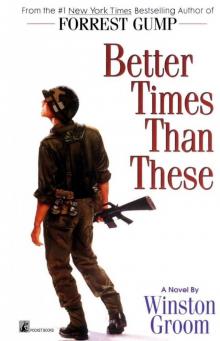 Better Times Than These
Better Times Than These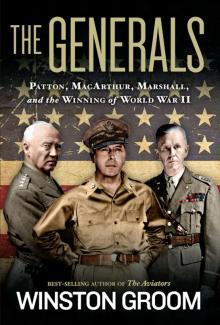 The Generals
The Generals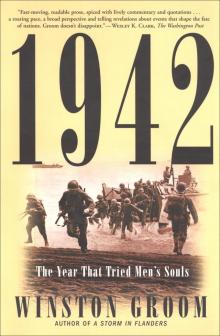 1942: The Year That Tried Men's Souls
1942: The Year That Tried Men's Souls Forrest Gump
Forrest Gump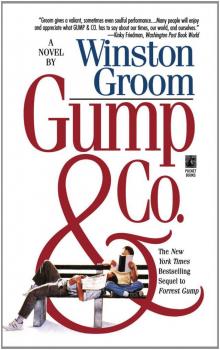 Gump and Co.
Gump and Co.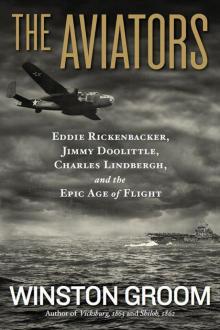 The Aviators
The Aviators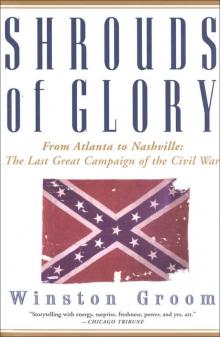 Shrouds of Glory
Shrouds of Glory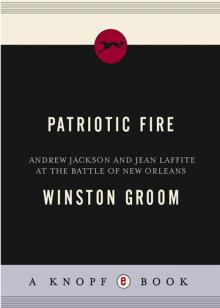 Patriotic Fire
Patriotic Fire Kearny's March
Kearny's March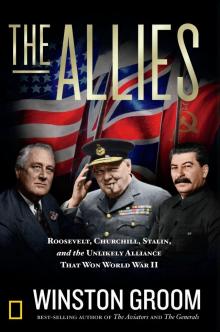 The Allies
The Allies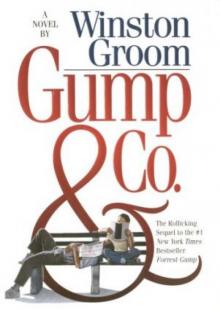 Gump & Company fg-2
Gump & Company fg-2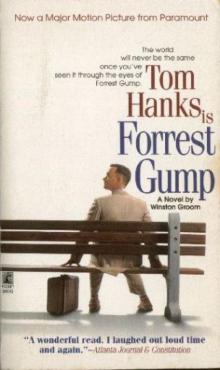 Forrest Gump fg-1
Forrest Gump fg-1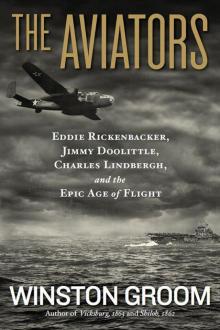 The Aviators: Eddie Rickenbacker, Jimmy Doolittle, Charles Lindbergh, and the Epic Age of Flight
The Aviators: Eddie Rickenbacker, Jimmy Doolittle, Charles Lindbergh, and the Epic Age of Flight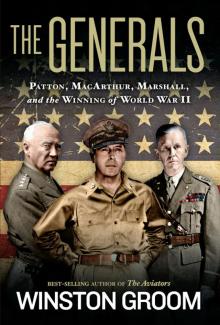 The Generals: Patton, MacArthur, Marshall, and the Winning of World War II
The Generals: Patton, MacArthur, Marshall, and the Winning of World War II